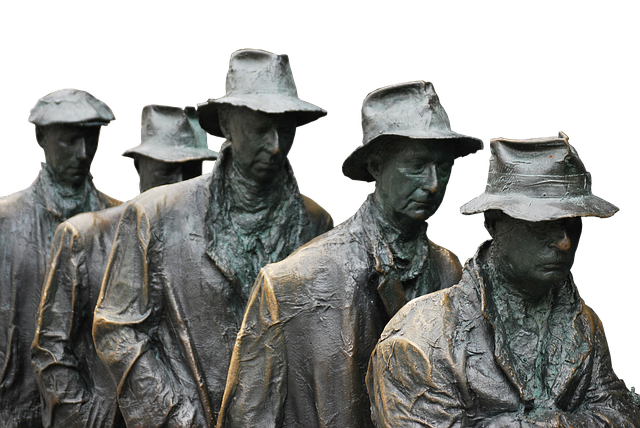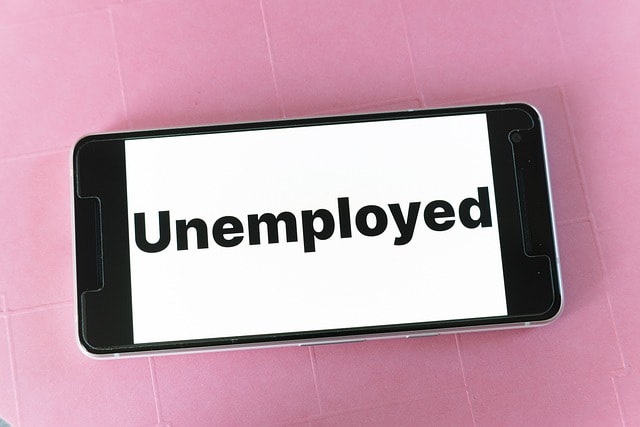
Cyclical Unemployment: Essential Strategies for Economic Downturns
Cyclical unemployment happens when economic downturns lead to widespread job losses. Unlike other types of unemployment, it is directly linked to the business cycle. This article covers what cyclical unemployment is, its causes, stages, and historical examples, as well as strategies to deal with it.
Key Takeaways
-
Cyclical unemployment is driven by economic downturns and differs from structural and frictional unemployment, necessitating targeted strategies for mitigation.
-
The progression of cyclical unemployment involves stages of economic contraction, layoffs, and recovery, with historical examples revealing consistent patterns and impacts on the labor market.
-
Effective strategies to reduce cyclical unemployment during downturns include skill development, diversifying income streams, and implementing robust government interventions to stimulate job creation.
Understanding Cyclical Unemployment
Cyclical unemployment occurs when job losses arise due to economic downturns, specifically tied to the fluctuations of business cycles. Unlike structural unemployment, which results from long-term changes in the economy, cyclical unemployment follows a recurring rhythm based on the economic cycle. This type of unemployment is an unavoidable aspect of the labor market, influenced by various factors, including economic conditions and labor market dynamics.
Grasping cyclical unemployment helps in identifying its effects on the unemployment rate and the overall economy. It often leads to significant rises in unemployment rates during periods of economic contraction and can be mitigated through strategic interventions.
Examining the root causes and phases of cyclical unemployment enables better prediction and response to its impacts.
Definition and Causes
Cyclical unemployment is a type of unemployment caused by insufficient demand for labor during economic downturns. This phenomenon typically occurs when there is a significant slowdown in business activities, leading to reduced consumer demand and, consequently, fewer job opportunities. For instance, a stock market crash can trigger a domino effect, resulting in widespread job losses as businesses cut back on expenses to cope with reduced profits.
During economic recessions, cyclical unemployment typically rises, reflecting the decreased labor demand and fewer job openings. Historical patterns show that consumer demand fluctuations often drive cyclical unemployment, highlighting the need for proactive measures to address its causes and mitigate its impacts.
Comparison with Other Types of Unemployment
Cyclical unemployment differs significantly from other types of unemployment, such as structural and frictional unemployment. Structural unemployment arises from long-term changes in the economy, often involving a mismatch between workers’ skills and job requirements. This type of unemployment is challenging to reduce because it typically occurs due to major technological changes or shifts in government policies that render certain jobs obsolete.
On the other hand, frictional unemployment occurs when individuals voluntarily change jobs, representing a normal part of a healthy labor market. While frictional unemployment is often short-term, cyclical unemployment is closely tied to economic recessions and tends to persist until the economy recovers.
Recognizing these differences is key for crafting effective strategies to tackle each type of unemployment.
The Stages of Cyclical Unemployment
Cyclical unemployment progresses through several distinct stages: economic contraction, layoffs, and eventual recovery within the business cycle. The journey from economic downturn to recovery can be tumultuous, affecting various industries and the overall labor market. Recognizing these stages can help in anticipating and mitigating the impacts of cyclical unemployment.
During economic contraction, cyclical unemployment rates fluctuate, reflecting decreased labor demand. As businesses respond to economic downturns by downsizing, the labor market experiences higher turnover rates and significant job scarcity. Conversely, when the economy rebounds, job opportunities gradually return, restoring some level of employment stability.
Economic Contraction Begins
The onset of an economic downturn often leads to a noticeable increase in cyclical unemployment. This initial phase, marked by an economic contraction, sees various sectors, such as hospitality and tourism, experiencing dramatic decreases in employment due to reduced consumer travel and spending. As the economy begins to contract, businesses anticipate lower revenues and start implementing cost-cutting measures, including hiring freezes and layoffs.
An economic downturn profoundly affects cyclical unemployment, typically resulting in higher joblessness. The labor market becomes a challenging landscape for job seekers, with fewer opportunities and increased competition for available positions. Recognizing this stage aids in preparing and enacting measures to assist affected workers and stabilize the economy.
Layoffs and Job Scarcity
As the economic contraction deepens, businesses reduce their workforce through layoffs or halt hiring to manage costs. This phase of layoffs and job scarcity is particularly challenging for workers, who face significant difficulties in securing full-time employment. The construction sector, for instance, often sees widespread layoffs as new projects are halted and demand for housing declines.
The ripple effects of widespread layoffs extend beyond individual workers, impacting the broader economy. Reduced consumer spending leads to lower production levels, further straining economic activities. This stage underscores the importance of robust unemployment insurance benefits and support systems to help unemployed persons navigate these challenging times.
Recovery and Economic Upturn
The recovery phase marks a gradual restoration of job opportunities as the economy rebounds. Favorable economic conditions lead to increased consumer demand, prompting businesses to rehire employees to meet renewed demand for goods and services. This phase often sees a positive cycle of economic growth and job creation, contributing to a healthier labor market.
For example, during the recovery following the COVID-19 pandemic, businesses across various sectors began rehiring employees to meet renewed consumer demand. The gradual recovery highlights the resilience of the economy and the importance of strategic measures to support job creation and economic stability.
Historical Examples of Cyclical Unemployment
Historical examples of cyclical unemployment provide valuable insights into the patterns and impacts of economic downturns. By examining past recessions, we can identify lessons learned and strategies that proved effective in mitigating unemployment during challenging times. This section explores three notable examples: the Great Recession, the post-World War II period, and the COVID-19 pandemic.
These examples illustrate how different economic events have shaped the labor market and unemployment rates. They also highlight the resilience of the economy and the importance of proactive measures to address cyclical unemployment.
The Great Recession
The Great Recession, the biggest financial crisis since the Great Depression, significantly increased cyclical unemployment during the economic recession. During this period, the unemployment rate peaked at 10 percent, driven by the housing bubble burst and increased foreclosures. The collapse of the housing industry led to a sharp decline in construction jobs, with approximately 1.5 million construction workers becoming unemployed.
As the economy began to recover, construction jobs returned due to renewed demand in housing. This recovery phase illustrates the cyclical nature of unemployment and the importance of targeted interventions to support affected industries and workers.
Post-World War II
After World War II, there was a surge in unemployment due to the reduction in demand for wartime production and the return of soldiers seeking jobs. Despite the initial high unemployment rates, significant economic growth followed, driven by the manufacturing industry’s ability to create new jobs.
The transition from high unemployment to recovery highlights the resilience of the labor market and the economy’s adaptability. This period serves as a testament to the potential for economic recovery and growth following significant disruptions.
COVID-19 Pandemic
The COVID-19 pandemic forced many businesses to close, leading to millions of layoffs and significant economic decline. The unemployment rate during this period reached a historic peak of 14.8% in the United States, surpassing the unemployment rates seen during the Great Recession.
Recovery efforts included government relief measures and the gradual reopening of businesses, which helped mitigate the long-term impacts of the pandemic on the labor market. The COVID-19 pandemic serves as a recent example of how cyclical unemployment can rapidly escalate during unforeseen economic disruptions.
Impact on the Labor Market
Cyclical unemployment significantly impacts the labor market, leading to reductions in hiring and increases in layoffs as companies respond to decreased economic activity. The overall productivity of industries declines due to reduced demand for goods and services, creating a challenging environment for job seekers.
As the economy begins to improve, increased demand for goods and services often results in hiring or increased hours for employees. This recovery phase involves a gradual decrease in unemployment as companies demand more from their existing employees and eventually start rehiring.
Industry-Specific Effects
During economic downturns, businesses often implement hiring freezes to cope with reduced demand. The automotive industry, for example, responds by laying off workers due to decreased consumer demand. Similarly, the construction sector experiences severe job losses as new building projects are canceled.
These industry-specific effects underscore the importance of targeted support measures to help affected sectors navigate economic downturns. Understanding these impacts can inform strategies to stabilize the labor market and support workers in vulnerable industries.
Long-Term Unemployment Risks
Cyclical unemployment can create a cycle where the longer individuals are unemployed, the more difficult it becomes to re-enter the workforce. Long-term unemployment can result in evolving job market conditions that may not align with previously held skills, making it challenging for workers to find new employment.
Historically, an unemployment rate exceeding 10% is often regarded as indicative of significant economic distress. The hospitality sector, for instance, frequently faces job losses during economic downturns due to reduced consumer spending.
Mitigating these risks involves proactive steps to support skill development and job placement for the long-term unemployed.
Strategies to Mitigate Cyclical Unemployment
Implementing effective strategies can help reduce the effects of cyclical unemployment during economic downturns. These strategies include skill development and training, diversifying income streams, and government interventions. By focusing on these areas, individuals and policymakers can enhance economic resilience and support the labor market during periods of economic instability.
Increased consumer spending, rising demand, lower interest rates, and government programs are key factors that contribute to the recovery from cyclical unemployment. Understanding and leveraging these factors can help create a more robust and adaptable economy.
Skill Development and Training
For individuals facing cyclical unemployment, acquiring new skills and relevant credentials is a vital strategy. Initial job losses can lead to skill degradation, making it harder for workers to find employment even as the economy improves. Pursuing professional certificates and refining transferable skills like critical thinking and communication can boost career prospects during tough economic periods.
These efforts not only improve individual employability but also contribute to a more versatile and resilient workforce. Emphasizing skill development can help bridge the gap between job seekers and available opportunities, ultimately supporting economic recovery.
Diversifying Income Streams
Maintaining financial stability during economic downturns often requires diversifying income streams. Effective ways to achieve this include engaging in side jobs, side hustles, and passive income streams. These strategies can provide additional financial security and help individuals navigate economic uncertainties.
Implementing income diversification strategies can lead to greater financial stability, allowing individuals to better manage mortgage payments and save money during periods of economic hardship. By exploring alternative income sources, workers can enhance their financial resilience and reduce the impact of cyclical unemployment.
Government Interventions
Government spending and fiscal policy play a crucial role in mitigating the impacts of cyclical unemployment. During economic downturns, policymakers can implement legislative measures or incentives to enhance job creation and lower unemployment rates. For example, during the COVID-19 pandemic, the government provided $6 trillion in relief to support businesses and individuals.
Targeted government interventions can help stabilize the economy, promote economic expansions, and support the labor market during periods of economic strain. By strategically deploying resources, governments can create a positive cycle of economic activity and job growth, helping to reduce cyclical unemployment and support overall economic health.
Calculating and Understanding Unemployment Rates
Comprehending how unemployment rates are calculated is key for interpreting economic indicators and labor market conditions. The unemployment rate is calculated by dividing the number of unemployed individuals by the total labor force and then multiplying the result by 100. This calculation provides a clear picture of the percentage of the labor force that is unemployed, serving as a key metric for economists and policymakers.
High unemployment thresholds are significant indicators of economic distress. Historically, an unemployment rate exceeding 10% is typically classified as high, with developed economies often considering rates above 7% to be alarming. During the COVID-19 pandemic, for instance, the peak unemployment rate reached 14.8%, underscoring the severe impact of the crisis on the labor market.
Unemployment Rate Calculation
The significance of the unemployment rate calculation lies in its ability to represent economic health and labor market conditions. By taking the number of unemployed individuals and dividing it by the total labor force, the resulting percentage provides a snapshot of the labor market’s status and labor statistics. This formula highlights the relationship between unemployed individuals and those actively participating in the labor force, helping to gauge the extent of unemployment cycles and economic challenges.
For policymakers, economists, and the public, understanding this calculation is crucial for assessing the effectiveness of economic policies and interventions to reduce cyclical unemployment and foster economic stability.
High Unemployment Thresholds
High unemployment thresholds serve as a benchmark for identifying significant economic distress. An unemployment rate exceeding 10% is often regarded as indicative of severe economic challenges. Developed economies typically consider an unemployment rate above 7% to signal substantial issues within the labor market.
During the COVID-19 pandemic, the peak unemployment rate reached a historic 14.8%, highlighting the profound impact of economic disruptions on employment. Identifying these thresholds is essential for timely and effective measures to support the labor force and mitigate high cyclical unemployment effects.
Summary
Cyclical unemployment, driven by economic downturns, profoundly impacts the labor market and overall economy. Understanding its causes, stages, and historical examples provides valuable insights into mitigating its effects. Strategies such as skill development, income diversification, and government interventions play crucial roles in supporting individuals and stabilizing the economy. By comprehensively addressing cyclical unemployment, we can foster a more resilient and adaptable labor market, better equipped to navigate future economic challenges.
Frequently Asked Questions
What is cyclical unemployment?
Cyclical unemployment occurs as a result of economic downturns and is directly linked to fluctuations in the business cycle. It reflects the loss of jobs associated with reduced demand for goods and services during these periods.
How does cyclical unemployment differ from structural unemployment?
Cyclical unemployment is primarily caused by economic downturns, leading to decreased demand for labor, while structural unemployment results from long-term shifts in the economy, often due to a mismatch between workers' skills and job requirements. Thus, cyclical unemployment fluctuates with the business cycle, whereas structural unemployment persists even during economic recovery.
What are the key stages of cyclical unemployment?
Cyclical unemployment progresses through three key stages: economic contraction, characterized by layoffs and job scarcity, followed by recovery and economic upturn. Understanding these stages can help in anticipating labor market changes during economic fluctuations.
How can individuals mitigate the impact of cyclical unemployment?
To mitigate the impact of cyclical unemployment, individuals should focus on developing new skills, diversifying their income streams, and accessing available government support. These proactive steps can enhance resilience during economic fluctuations.
What role does the government play in addressing cyclical unemployment?
The government addresses cyclical unemployment by implementing fiscal policies, increasing public spending, and creating targeted interventions to promote job creation and stabilize the economy during economic downturns.
%20512x512%20google%20store%20app%20logo%20SEPT%2024%2c%202025%20(4)-png.png?width=51&height=51&name=USE!!%20)%20512x512%20google%20store%20app%20logo%20SEPT%2024%2c%202025%20(4)-png.png)







